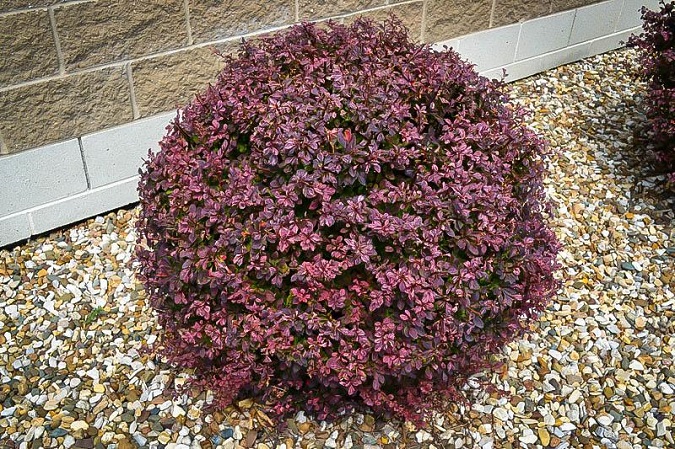
Crimson Pygmy Barberry (berberis thunbergii autropurpurea nana) is a great, low maintenance landscape plant, with beautiful red leaves that turn a deep burgundy by fall. The color and compact habit of this plant make it a popular landscape plant. Crimson Pygmy Barberry only grows about 3 inches each year and requires very little pruning.
It can be used as a border plant, or as an accent plant. It requires a location that is mostly sunny, but be careful, this little beauty bites. Just below those beautiful red leaves are the tiniest, and sharpest thorns you will ever encounter. But since the plant requires so little maintenance, you don’t encounter the thorns very often.
Just don’t plant Crimson Pygmy Barberry where little kids are likely to tread. Not only will it bite them, but Barberry plants are very brittle, and if stepped on the branches break completely off. Keep this in mind if you plan to use it along a walkway where snow shoveling will take place.
Crimson Pygmy Barberry is not to be confused with Rosy Glow Barberry, or Mentor Barberry, which are more upright growers. Rosy Glow Barberry has the prettiest new growth of just about any plant you will see. The small leaves come out pinkish red in color and appear to be pink and white variegated. It is a very nice plant if you need something that will get about three feet tall.
Mentor Barberry is the plant you want to use if you need to keep people out of an area. It grows to a height of six feet tall and is loaded with very sharp, long thorns. This plant is not that much fun to get close to. Mentor Barberry has green leaves. Red Barberry (Berberis thunbergii autropurpurea grows just like Mentor Barberry, but it has pretty red leaves, but still has those nasty thorns.
Back in my high school days a nursery that I was working for bought a whole field of these two varieties, and I was on the crew that had to carry them out of the field and load them on semi-trailer trucks.
The live thorns on the new growth are soft in the spring, but by winter they are very hard and sharp. But the worst thorns of all are the ones on the dead twigs that have fallen from the plants. And when you are digging and carrying full grown plants, you are constantly grabbing one of these twigs as you wrestle with the heavy plants.
I’ll never forget those few days we spent hauling those plants out of that field. Our hands were swollen a week later!
Mike McGroarty is the owner of McGroarty Enterprises and the author of several books. You can visit his website at FreePlants.com and read his blog at MikeBackYardNursery.com.
Related Articles & Free Email Newsletter
How to Care For an Indoor Ficus benjamina
Plant Profile – Bananas Offer Versatility in Any Landscape




Comment here